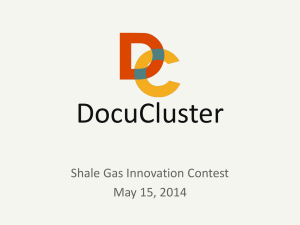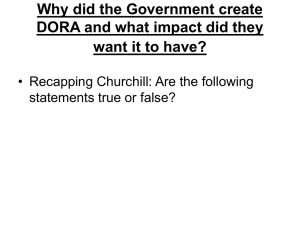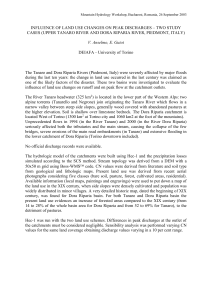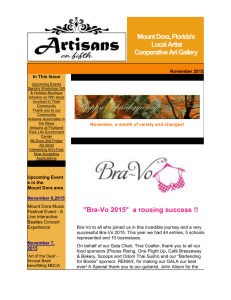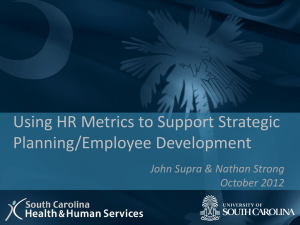For publishers
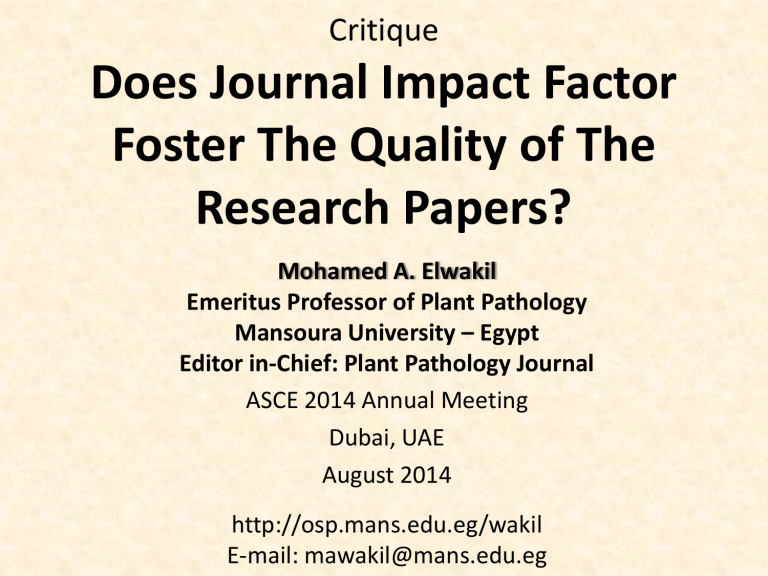
Critique
Does Journal Impact Factor
Foster The Quality of The
Research Papers?
Mohamed A. Elwakil
Emeritus Professor of Plant Pathology
Mansoura University – Egypt
Editor in-Chief: Plant Pathology Journal
ASCE 2014 Annual Meeting
Dubai, UAE
August 2014 http://osp.mans.edu.eg/wakil
E-mail: mawakil@mans.edu.eg
Where do we really stand in terms of research publication and impact factor?
Dr. Arghya Bandyopadhyay, Khalisani College, West Bengal
India on the ResearchGate
A - Popular Answer
Robin Damion, Univ. of Leeds (UK)
1. Impact factor has nothing to do with the quality of the work.
2. It is ridiculous to think that the quality of research is dependent on what Journal you choose to submit it to.
3. The quality of a paper should be judged by the paper, not the journal it happens to be published in.
(Oct. 25, 2013)
A - Popular Answer (continued)
4. We are no longer in the position where we need the journals to distribute our work. We have the internet.
5. We can post the papers on publicly Searchable sits such as:
•
Research gate.
•
Academia. edu.
• ar Xiv.org.
•
Institutional repositories etc…
B - Popular Answer
Samuel Arba Mosquera, Solutions Gmb H & Co. KG.
1. The important thing is how good your paper is , all the rest is secondary.
2. I must disclose that I DO NOT have any interest in any particular publisher.
It was found that:
1. The J. impact factor is frequently used as the primary parameter with which to compare the scientific output of individuals and Institutions.
2. But, JIF as calculated by Thomson Scientific
(Reuters) was created as a tool to help librarians identify journals to purchase.
3. Thomson Scientific has issued advice that JIF does not measure the quality of an individual article in a journal, but rather correlates to the reputation in its field.
4. Thomson Scientific notes that some still misuse JIF and that is the problem, not the metric itself.
What is the impact factor (IF)?
(
Introduced in 1963 by Thomson Reuters)
•
It is a measure of the average number of citations to articles published in science and social science journals. The IF was devised as indicator of importance of a particular Journal in its field.
•
It is an independent method of comparing the scientific quality and success of one Journal to another in the same field.
How is the IF calculated?
By dividing the number of current year citations to the source items published in that journal during the previous two years.
How is the IF calculated?
For example: How is 2013 IF calculated?
A= 2013 cites to articles published in 2011 & 2012.
B= number of articles published in 2011 & 2012.
C= A/B = 2013 J. impact factor.
How is the IF calculated?
Example: Calculating 2013 impact factor.
Articles published in
2012 (A)
Article No. 1
Article No. 2
Article No. 3
.
.
Article No. 25
No. of
Citations in
2013 (C)
4
.
5
0
3
.
Articles published in
2011 (B)
Article No. 1
Article No. 2
Article No. 3
.
.
Article No. 20
No. of
Citations in
2013 (D)
0
.
2
5
1
.
Total: 25 30 20 13
43 45
IF 2013 = (C+D)/(A+B) = (30+13)/(20+25) = 43/45 = 0.95
Overall Objectives of IF
•
The original concept of the IF was as a marketing tool for publishers who could charge higher advertising rates.
•
It was also intended to guide librarians on how to select journals that should be included within their catalogue.
The inappropriate uses of IF
1. Comparing different journals within different fields with different subject matter.
2. Judging the quality of an individual paper or researcher.
3. Measuring the overall impact of a journal on the scientific community.
Is the IF a proxy for Scientific
Merits?
1. Many institutions consider IF as a proxy for scientific merits!!!!
2. Some compensate the authors with cash bonuses based on IF of the journal they publish in!!!!
3. Such misconduct drifts the real purpose of this metric measure.
How Thomson Reuters Protects
The Validity of The IF Measure?
1. Suspend the J. of high rate of self citation by de-listing it from the journal citation report.
2. This is a punishment for abusing and misconduct of this metric measure.
3. As the research builds on prior discovery, some degree of self-citation is acceptable.
Measuring the Scientific
Performance
1. Preferred to be done by a non-profit institution(s) having specialized and flexible ranking tool services.
2. The institute develops and maintains an open access information website.
Declaration on Research Assessment
150 Scientists and 75 science organizations,
December 16, 2012, developed a set of recommendations referred as San Francisco
Declaration on Research Assessment (DORA).
San Francisco Declaration on Research
Assessment (DORA)
150 Scientists and 75 science organizations , December 16, 2012.
DORA clearly showed that JIF is:
• Specifically developed to allow journals understand their own impacts in the world of science and scholarship.
San Francisco Declaration on Research
Assessment (DORA)
150 Scientists and 75 science organizations , December 16, 2012.
• Not as means for assessing the performance of individual researches or institutions of higher learning or the quality of individual research articles or in hiring, promotion or funding decisions
San Francisco Declaration on Research
Assessment (DORA)
150 Scientists and 75 science organizations , December 16, 2012.
• The declaration intends to halt practice of correlating the JIF to the metric of specific scientist’s contributions
DORA recommendations
18 recommendations were proposed to:
1. Funders.
2. Institutions.
3. Researchers and decision makers.
4. Publishers.
5. Suppliers of metrics.
DORA recommendations
A. General Recommendation
Do not use journal-based metrics, such as Journal
Impact Factors, as a surrogate (substitute) measure of the quality of individual research articles, to assess an individual scientist’s contributions, or in hiring, promotion, or funding decisions.
DORA recommendations
B. For funding agencies
• Be explicit (definite) about the criteria used in evaluating the scientific productivity of grant applicants and clearly highlight, especially for early-stage investigators, that the scientific content of a paper is much more important than publication metrics or the identity of the journal in which it was published.
DORA recommendations
C. For institutions
• Be explicit (definite) about the criteria used to reach hiring, tenure, and promotion decisions, clearly highlighting, especially for early-stage investigators, that the scientific content of a paper is much more important than publication metrics or the identity of the journal in which it was published.
DORA recommendations
C. For institutions
• For the purposes of research assessment, consider the value and impact of all research outputs (including datasets and software) in addition to research publications, and consider a broad range of impact measures including qualitative indicators of research impact, such as influence on policy and practice.
DORA recommendations
D. For publishers
• Greatly reduce emphasis on the journal impact factor as a promotional tool, ideally by ceasing to promote the impact factor or by presenting the metric in the context of a variety of journalbased metrics (e.g., 5-year impact factor, Eigen
Factor, SCImago, h-index, editorial and publication times, etc.) that provide a richer view of journal performance.
DORA recommendations
D. For publishers
• Make available a range of article-level metrics to encourage a shift toward assessment based on the scientific content of an article rather than publication metrics of the journal in which it was published.
DORA recommendations
D. For publishers
• Encourage responsible authorship practices and the provision of information about the specific contributions of each author.
DORA recommendations
D. For publishers
• Whether a journal is open-access or subscription-based, remove all reuse limitations on reference lists in research articles and make them available under the Creative
Commons Public Domain Dedication.
DORA recommendations
D. For publishers and researchers
• Remove or reduce the constraints on the number of references in research articles, and, where appropriate, mandate the citation of primary literature in favor of reviews in order to give credit to the group(s) who first reported a finding.
DORA recommendations
E. For organizations that supply metrics
• Be open and transparent by providing data and methods used to calculate all metrics.
• Provide the data under a license that allows unrestricted reuse, and provide computational access to data, where possible.
DORA recommendations
E. For organizations that supply metrics
• Be clear that inappropriate manipulation of metrics will not be tolerated; be explicit about what constitutes inappropriate manipulation and what measures will be taken to combat this.
• Account for the variation in article types (e.g., reviews versus research articles), and in different subject areas when metrics are used, aggregated, or compared.
DORA recommendations
F. For researchers and decision makers
• When involved in committees making decisions about funding, hiring, tenure, or promotion, make assessments based on scientific content rather than publication metrics.
• Challenge research assessment practices that rely inappropriately on Journal Impact Factors and promote and teach best practice that focuses on the value and influence of specific research outputs.
Back to Answer Does Journal Impact Factor
Scale-up The Quality of The Research Papers?
Absolutely Not, because:
• It has nothing to do with quality of the published paper.
• It was created as a tool to help librarians identify journals to purchase.
• It was dedicated to measure the average no. of citations in the published articles.
• It is an independent method of comparing the scientific quality and success of one journal to another in the same field.
Misconduct of IF
• Comparing the scientific output of the individuals and institutions when making decisions about funding, hiring, tenure or promotion.
• Considering IF as a proxy for scientific merits!!!!
• Compensating the authors with cash bonuses based on IF of the journal they publish in!!!!
Does h-index (which depends on citation) work on all subjects?
No
• h-index works best with basic sciences.
• Applied sciences show limited no. of citations as the research output goes directly for application so, downloads or views work best.
• No metric measure is available for downloads or views.
Citations
Basic
Sciences
Applied
Sciences
Downloads,
Views
Impact of Zero Citation
Zero citation may occur because:
• It could have a meaning.
• The result of applied research may go to application directly.
• Or the research is dealing with a narrow area of interest so as not many people follow it.
• The research may be of a very high-tech and so costly so as not many are capable to continue working on the same subject.
